Mid Indian Ocean, October 2018

The World Arc 2018/2019 left St Lucia in January 2018, crossed the Pacific Ocean from February to July, and dipped into the Indian Ocean in September 2018. On October 1, the fleet of 20 boats left Cocos Keeling, bound for Mauritius 2350nm away. The passage got off to a slow start with light winds under 10 knots, but as forecasted, the winds finally did build to over 30 knots and the seas piled up to over 4 meters. After a couple of days, we were all reefed way down and holding on tight, taking waves over the decks and into the cockpits.
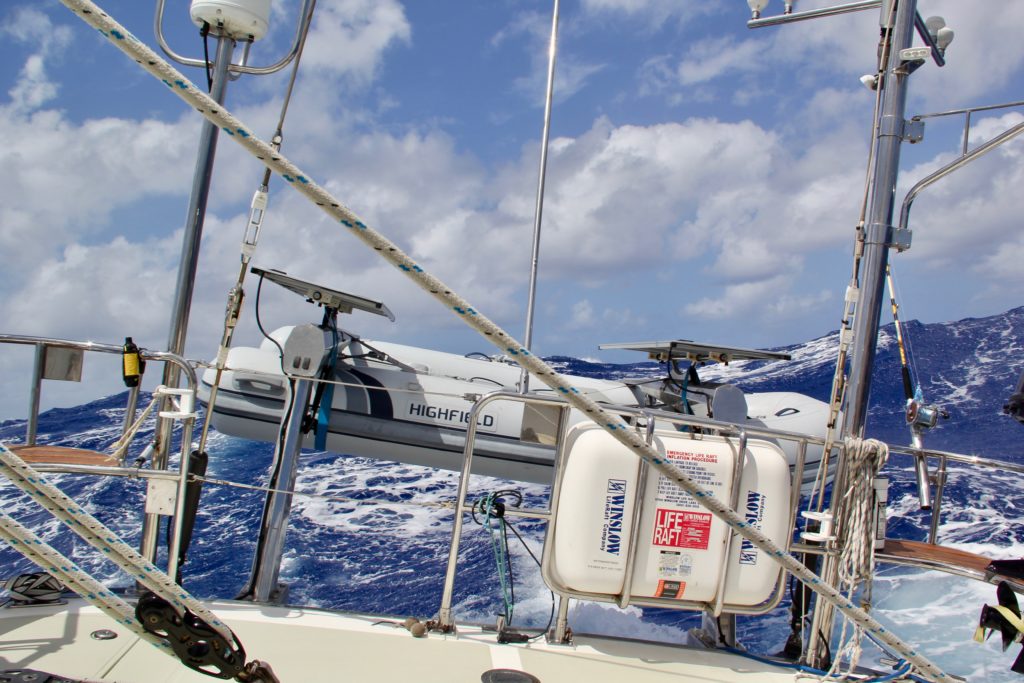
Blue Pearl had stayed south, while most of the other boats had followed a weather router’s guidance to head north early to catch the better wind. We hadn’t seen any other boats for days, when suddenly on October 9, Mad Monkey appeared on AIS and VHF, and then on the morning of October 10 Aranui appeared as well. As much as I love the solitude of the sea, seeing another boat on the chart plotter or the horizon in the middle of the ocean brings a smile to my face and calm to my heart.
At 15:15 on October 10, 800nm from Mauritius and 600nm from the nearest landfall, the call came reminding us all just how vital buddy boats can be.
“Mad Monkey, Mad Monkey, Blue Pearl, Blue Pearl, this is Aranui, Aranui.” When a bigger than normal wave hit Aranui broadside, a crew member had taken a fall from the galley across the 2 meter width of the cabin and collided with a door. Karen was lying crippled on the floor, hardly responsive. In the two hours before our daily 1700 net, her condition deteriorated, with falling blood pressure and heart rate, and she was no longer able to open her eyes or speak.
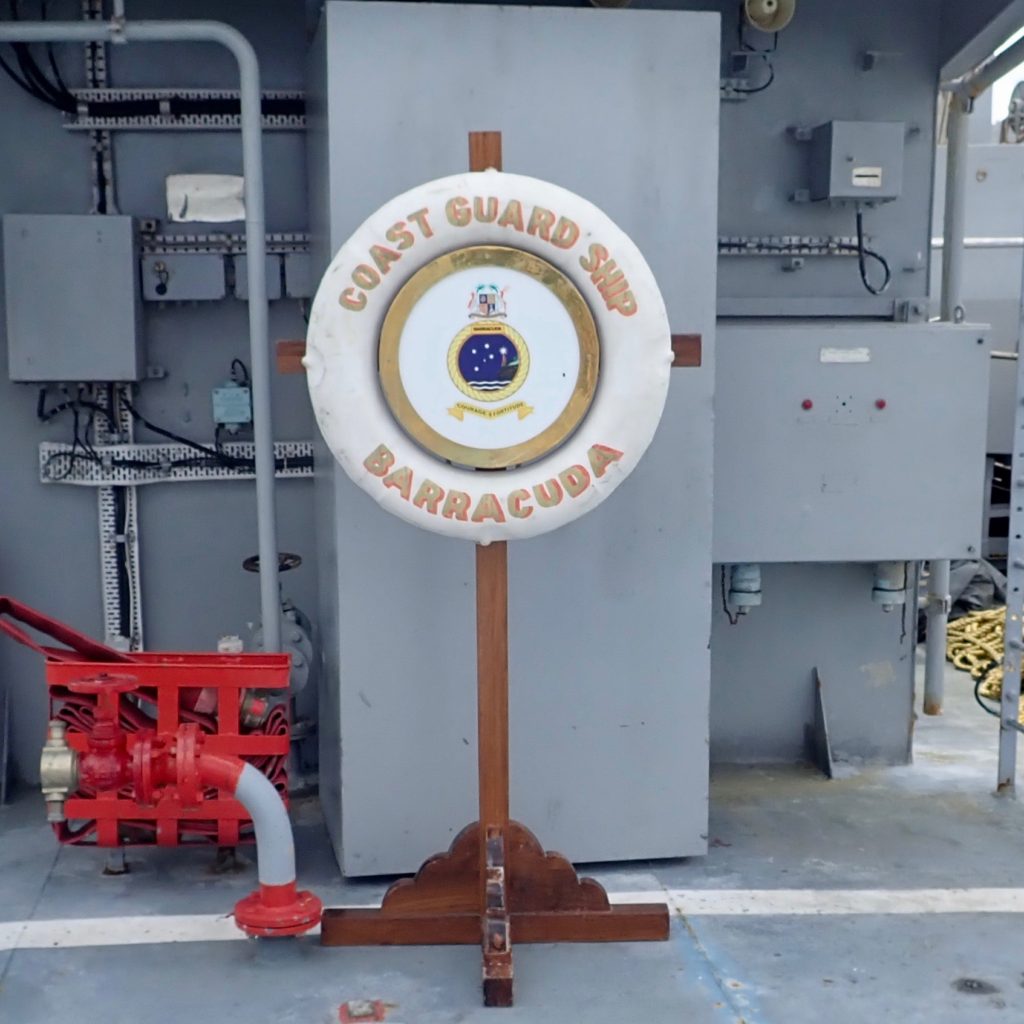
For 24 hours, Mad Monkey and Blue Pearl stayed close to Aranui, maintaining communications between Aranui, the fleet and land and keeping a watch so that Aranui’s captain and his crew could rest. (Aranui had lost their satellite communications and their single side band radio from a wave into the cabin shortly after Karen’s fall. Their only connection with the outside world was through VHF with Mad Monkey and Blue Pearl.) A doctor in the fleet provided vital medical advice and answered Captain Aranui’s questions. “Can she move her legs and hands?” “Do her eyes move and her pupils dilate symmetrically?” “Yes, you can give her more Parecetmol.” “Do not give her Ibuprofen. I repeat, do not give her Ibuprofen.” “Keep her awake.” A doctor from Maritime Rescue Coordination Center confirmed the advice: “You must evacuate her as soon as possible.” And finally, after several hours of sailing in over 30knots of wind and 4m seas thinking no one was coming to help, word came that a Mauritian Coast Guard vessel and plane were en route to provide assistance.
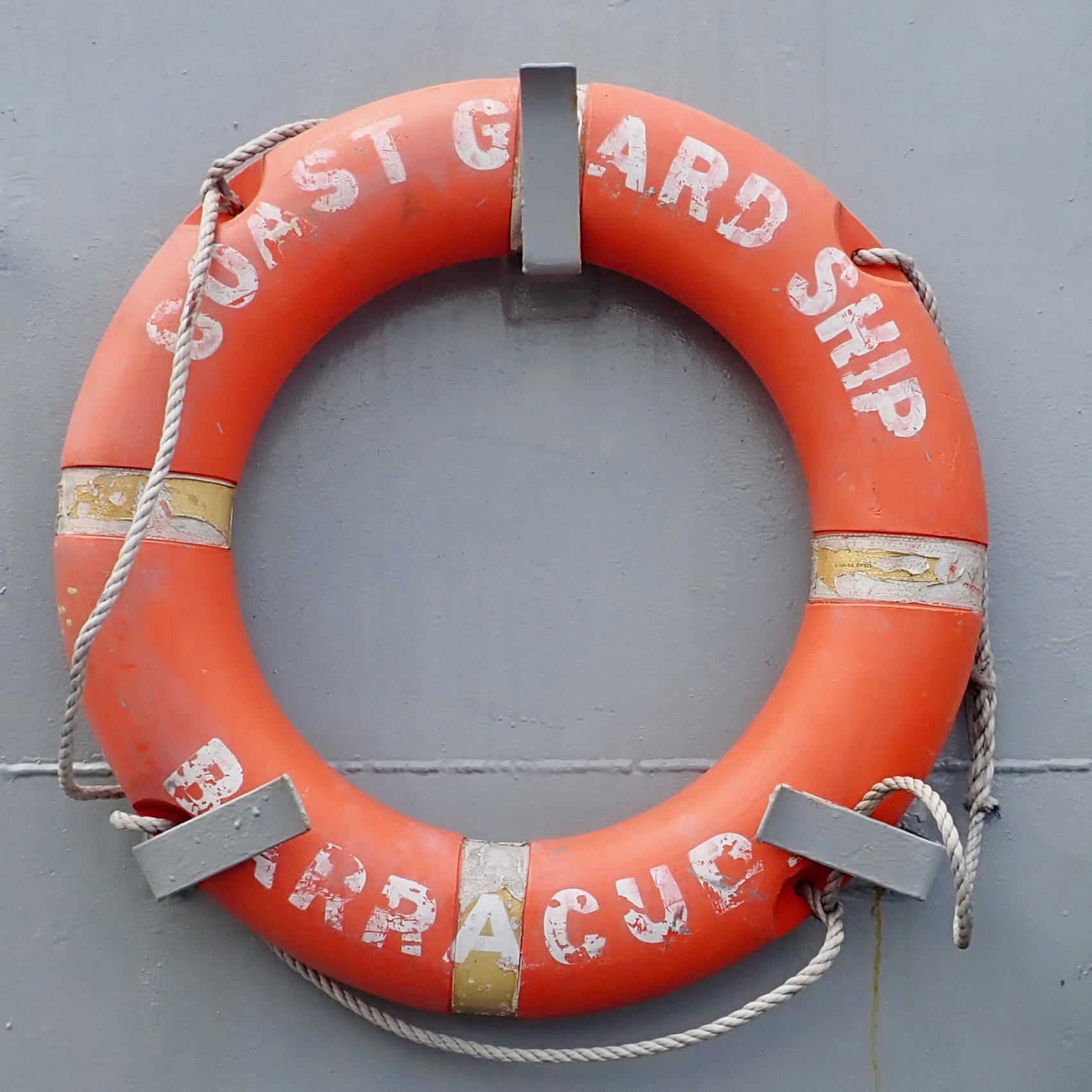
It was unclear to us what kind of vessel was coming (somehow we believed it was a pilot vessel, which is a small tug like vessel that meets large vessels in harbor to shepherd them to shore; what was a vessel like that going to offer in seas like these?), or what they intended to do (drop a medic? take Karen? take a crew from Blue Pearl to tend to her? move a Mad Monkey crew to Aranui to help Captain Aranui?), or where they would take her (is there even a hospital on Rodriguez? is there a functional CAT Scan machine available on Mauritius?). But two days after Karen’s fall, when Blue Pearl saw them on the horizon (such a big ship – 80m long – disappearing behind the waves, but plowing ahead into the 30 knots of wind at 10 knots SOG) and Aranui heard them on the VHF, it was clear they would save Karen, and that’s all that mattered.
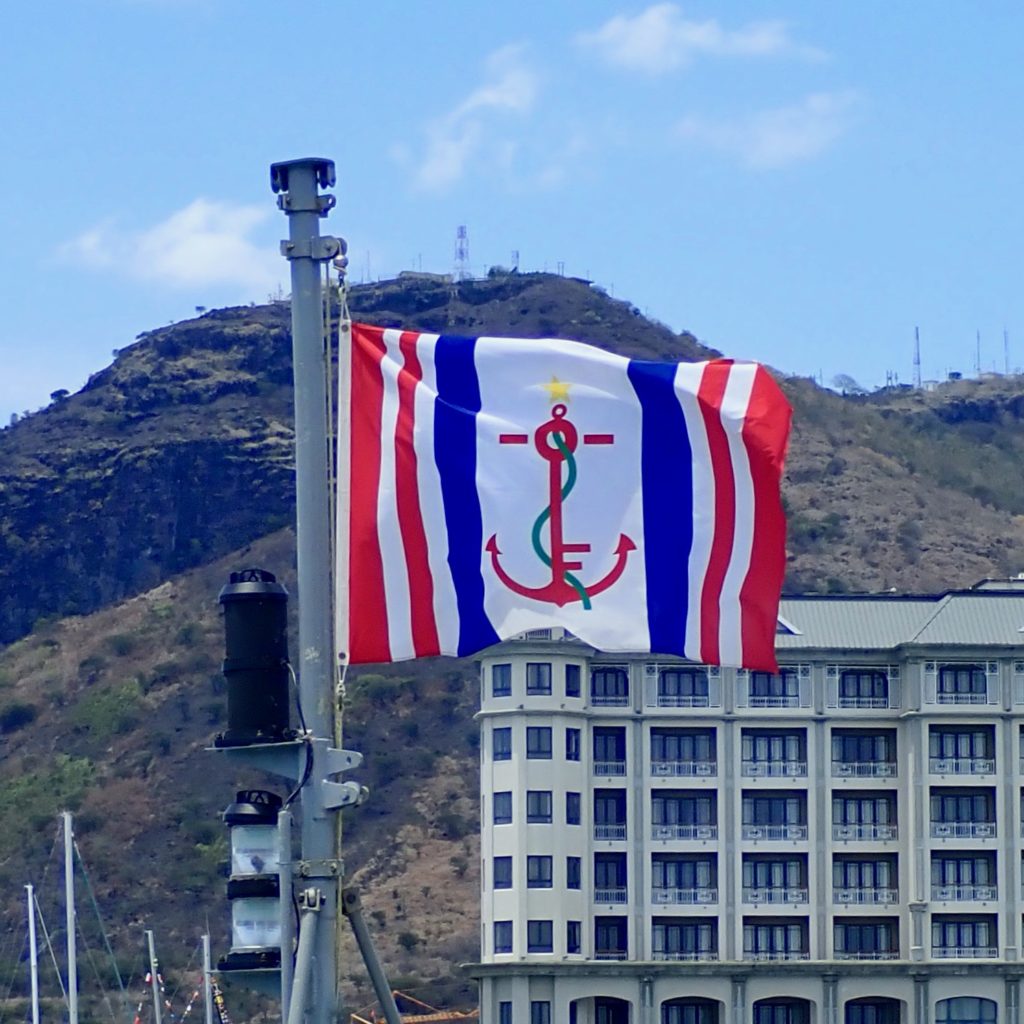
“Aranui, Aranui, This is Mauritius Coast Guard vessel Barracuda, Barracuda.”
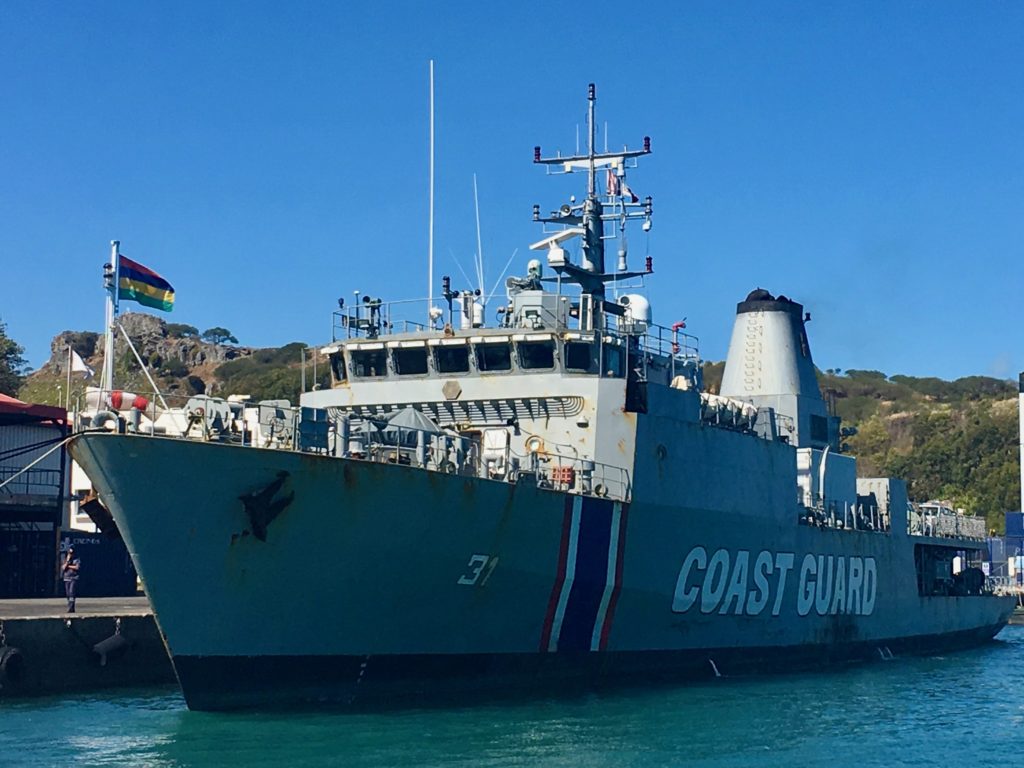
Barracuda pulled within 200m along the windward side of Aranui, but had very limited maneuverability in those close quarters and was drifting faster than Aranui. Despite the high winds and big seas, Barracuda attempted a rescue at 2200 hours when they first arrived. Barracuda Captain said, “We had to press on. One step at a time. First lower the boat into the water. Second, load the crew onboard.” Step by step, but the first attempt was cancelled before midnight.
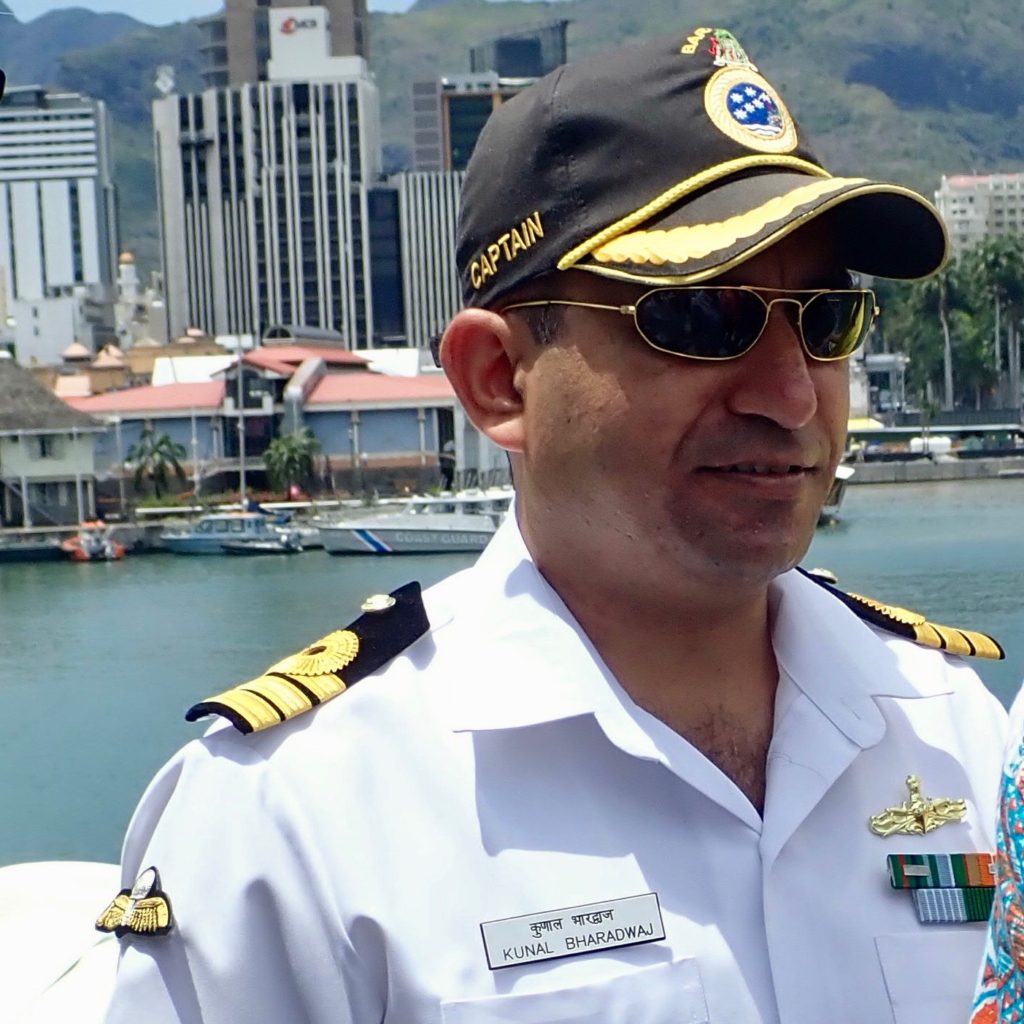
At 0830, Barracuda called Aranui again to begin a second attempt, in 3m seas with 25-28 knots of wind. Aranui was instructed to slow their speed, so that Barracuda’s 3m dinghy could catch up with them. (We later learned that the captain sent the smaller dinghy first, so that if people ended up in the water he still had the bigger and faster dinghy as backup.) Four men appeared along side Aranui in the dinghy with a stretcher and, according to Captain Aranui, “a look in their eyes saying: We will do anything humanly possible to bring Karen over to Barracuda.” Two swung off the dinghy onto Aranui with the stretcher and carried Karen to the cockpit on a board, and then transferred her onto the stretcher. The stretcher was lowered over the lifelines at midship, Karen dangling headfirst, toward the dinghy hobby horsing in the breaking waves. According to Captain Aranui, it was a “superhuman” effort to keep her out of the water and get her in the dinghy, but he didn’t doubt the resolve of the men (including two divers suited up, prepared to go in after her if necessary).
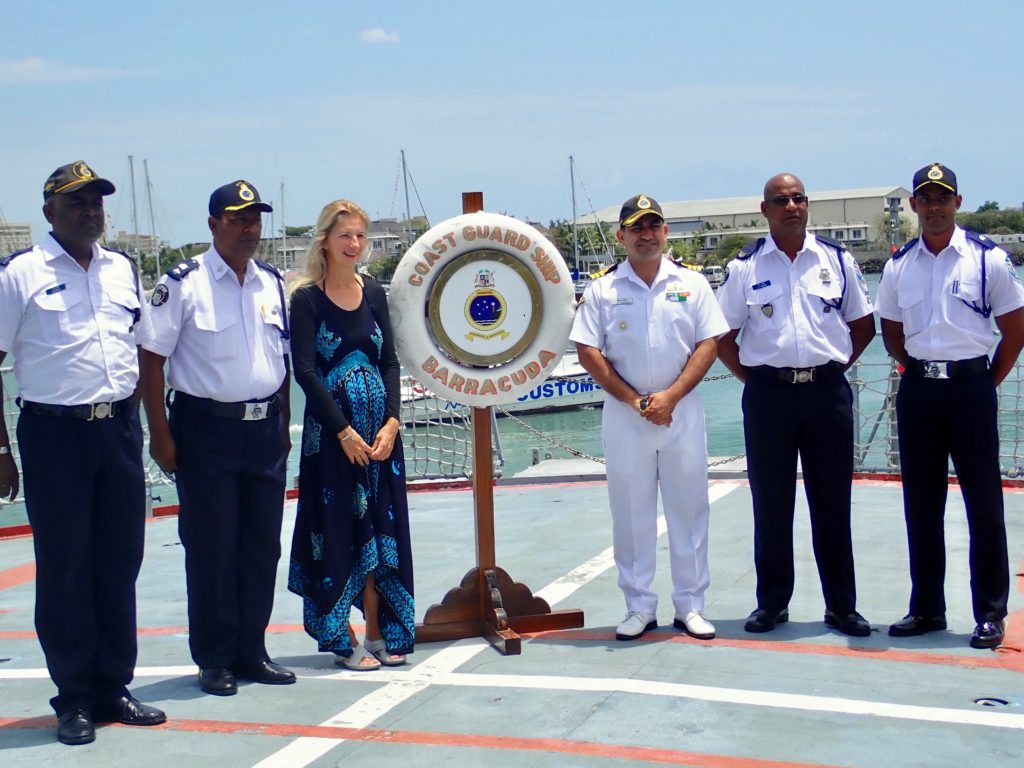
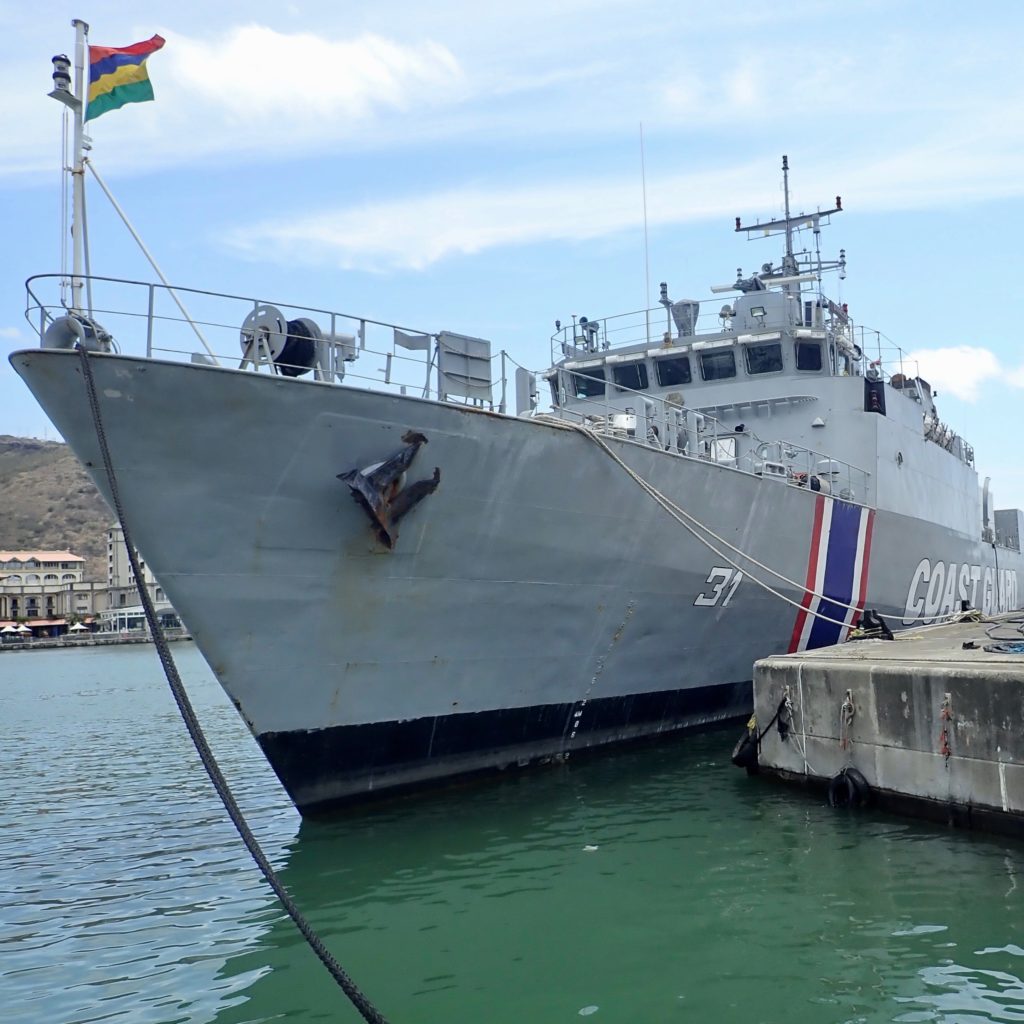 “Aranui, stay clear,” Captain Barracuda ordered once Karen was off. Let the professionals do their job. Captain Barracuda expertly maneuvered his ship away from Aranui through the wind and seas, and headed full throttle at 16 knots with the wind to the nearest hospital. A crane lifted Karen out of the dinghy and onto the deck of Barracuda, a warship. She was carried into the VIP suite and put to bed, because the sick bay would have required stairs Captain Barracuda didn’t want the crew to negotiate. According to Karen, as soon as her stretcher hit the deck of of Barracuda, she knew she was going to be ok. The crew very proudly says that she arrived in shock and left smiling.
“Aranui, stay clear,” Captain Barracuda ordered once Karen was off. Let the professionals do their job. Captain Barracuda expertly maneuvered his ship away from Aranui through the wind and seas, and headed full throttle at 16 knots with the wind to the nearest hospital. A crane lifted Karen out of the dinghy and onto the deck of Barracuda, a warship. She was carried into the VIP suite and put to bed, because the sick bay would have required stairs Captain Barracuda didn’t want the crew to negotiate. According to Karen, as soon as her stretcher hit the deck of of Barracuda, she knew she was going to be ok. The crew very proudly says that she arrived in shock and left smiling.
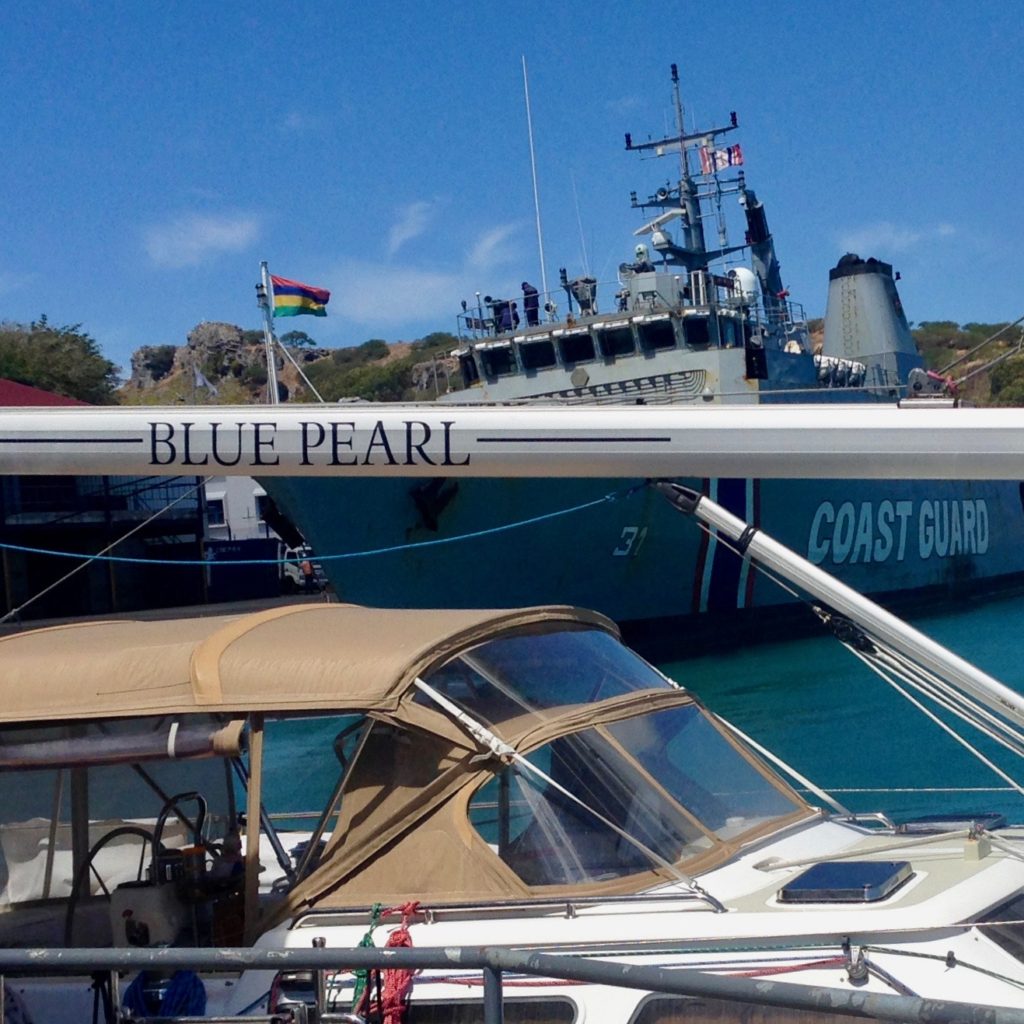
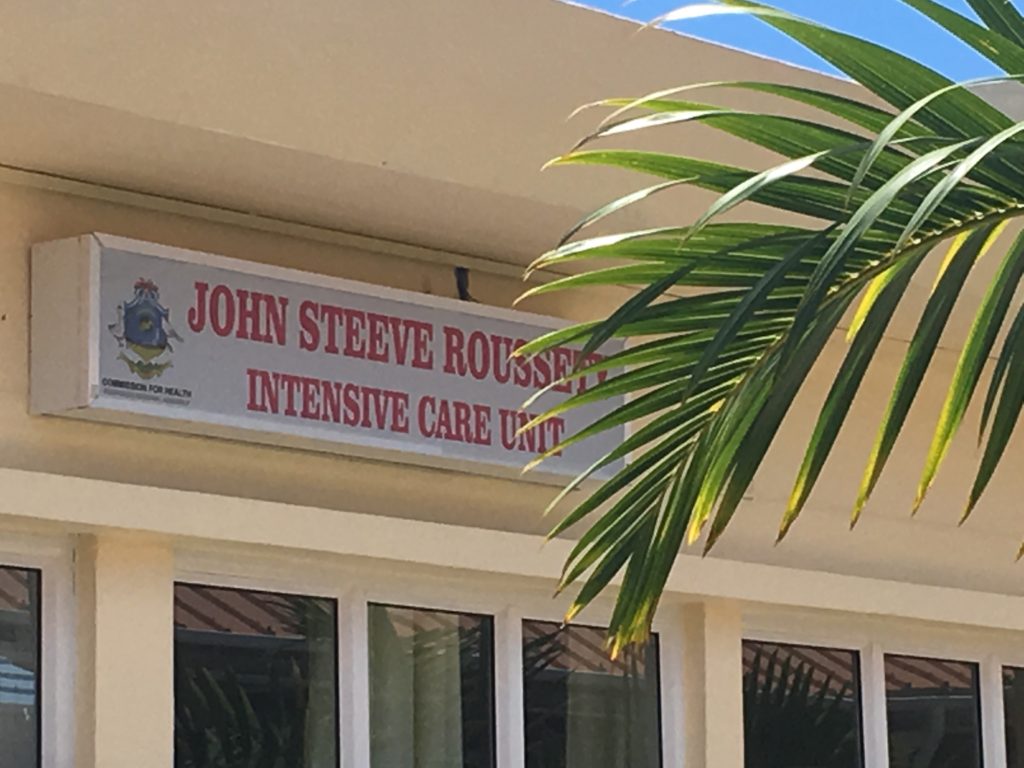
Blue Pearl diverted to Rodriguez, arriving just a few hours after Barracuda had arrived. In the morning, after a long check-in process, we hightailed it to the hospital where Karen was being treated. We found her in a bed in the ICU, smiling and laughing, not quite herself, but much better than we had expected. When we finally left Mauritius over two weeks after the accident, Karen was back to her normal self but still in a lot of pain. She flew home to the UK to rest, before rejoining us in South Africa in January.
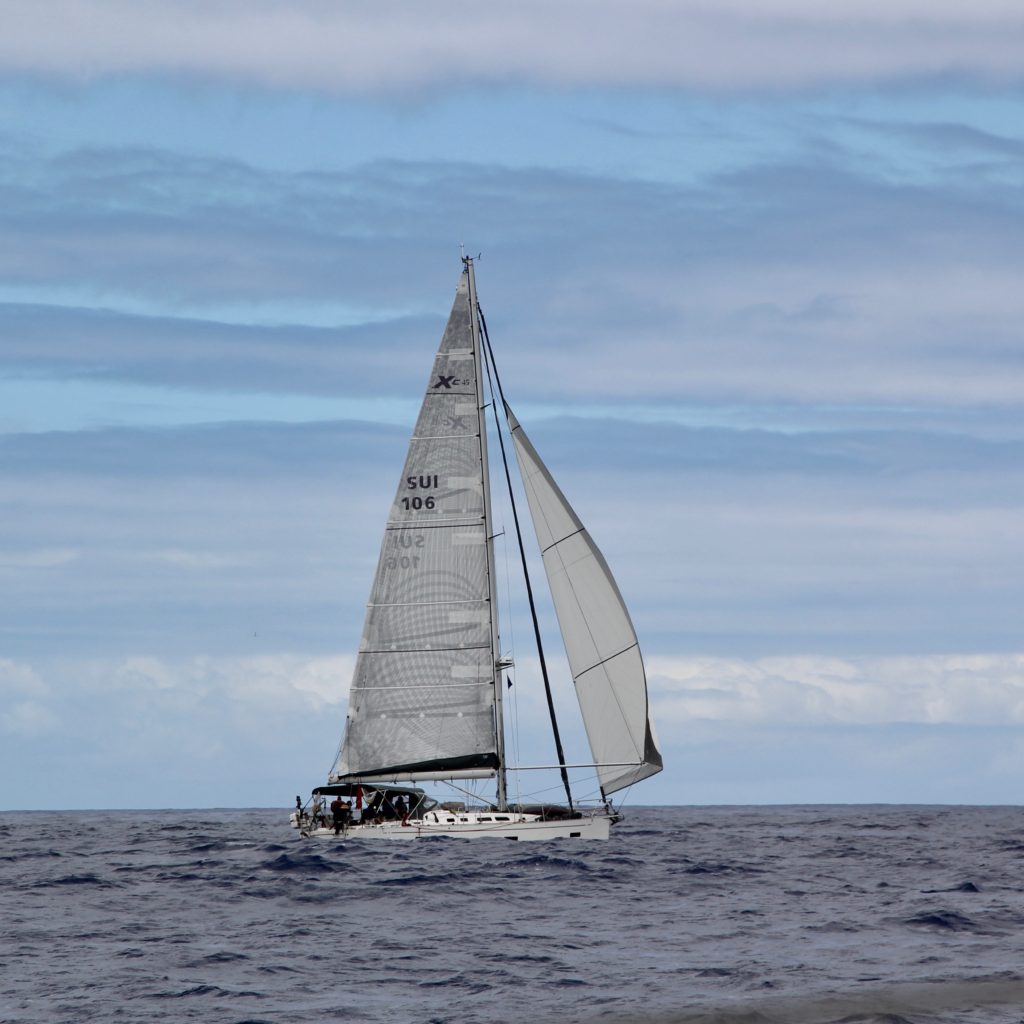
Captain Barracuda welcomed us onboard in Mauritius. He confirmed what we all believed, that he shared the commitment to others at sea, that when he got the call requesting him to divert to Aranui his only possible response was yes, despite the fact that winds were nearly double their limit for operations. He very graciously told us he “admire[s] your courage to undertake this world cruise,” to traverse those seas in our small boats, and he commanded his crew to “take inspiration” from our courage.
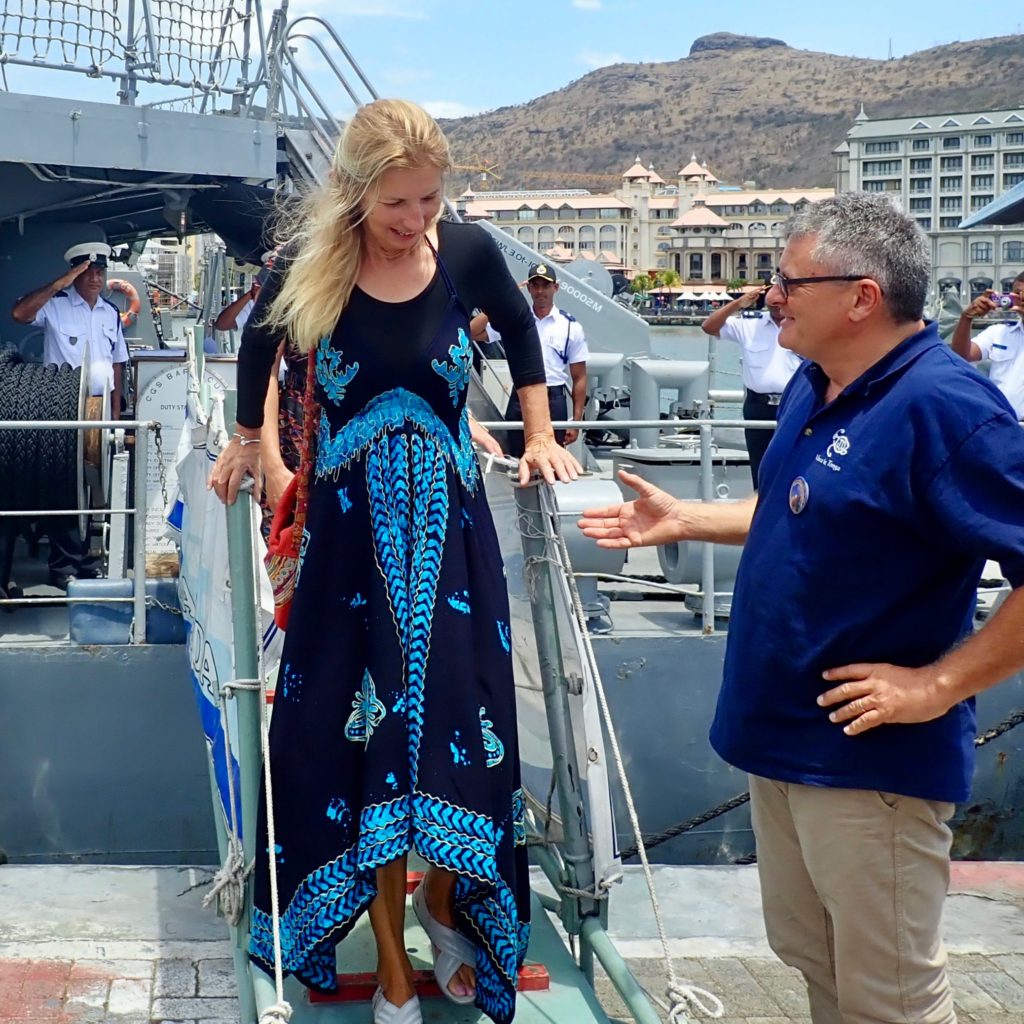
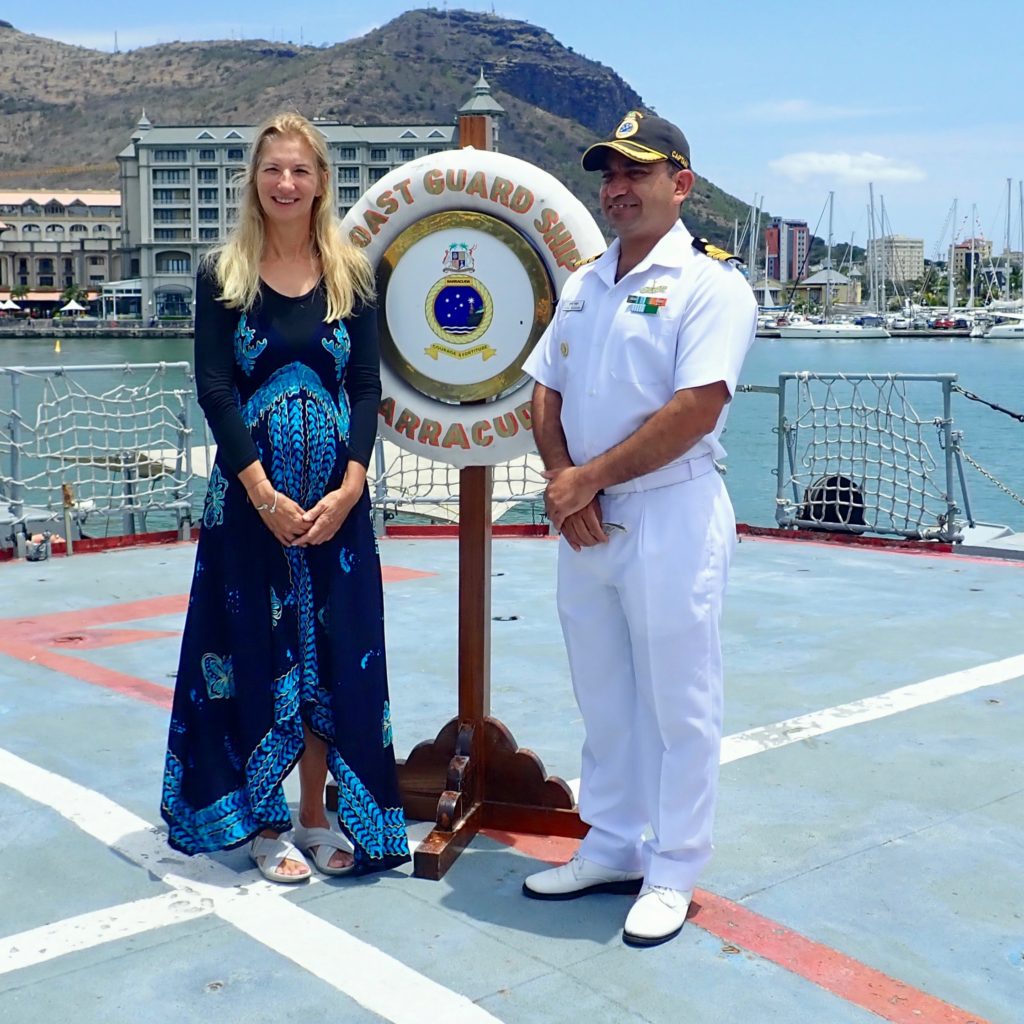 We feared we were going to lose Karen. All signs pointed at severe head trauma and potential subdural hematoma; the conditions were difficult; we were five days from land; and for a while it didn’t look like help was coming. We tried to express our gratitude to the captain and crew of Barracuda. Captain Barracuda’s response was, “Thank you for the opportunity to be of use.” The look in Barracuda Captain’s eyes when I first saw him after the rescue said, “There was a life to be saved, and so we did. That is our calling. That is the calling of the sea.”
We feared we were going to lose Karen. All signs pointed at severe head trauma and potential subdural hematoma; the conditions were difficult; we were five days from land; and for a while it didn’t look like help was coming. We tried to express our gratitude to the captain and crew of Barracuda. Captain Barracuda’s response was, “Thank you for the opportunity to be of use.” The look in Barracuda Captain’s eyes when I first saw him after the rescue said, “There was a life to be saved, and so we did. That is our calling. That is the calling of the sea.”
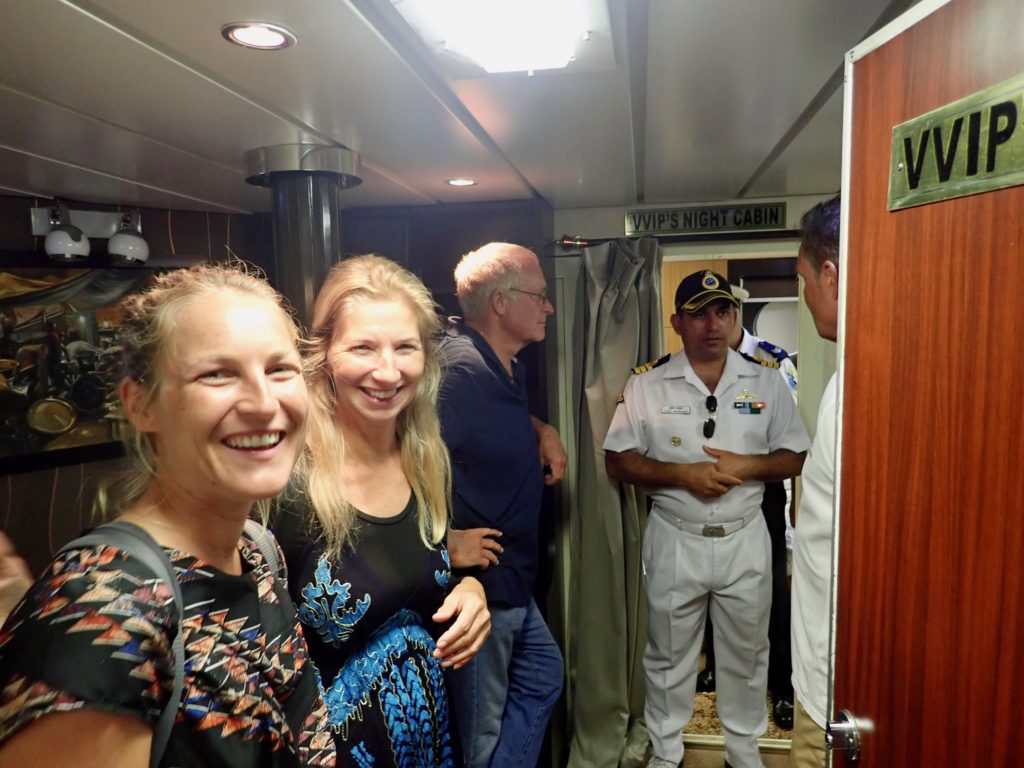
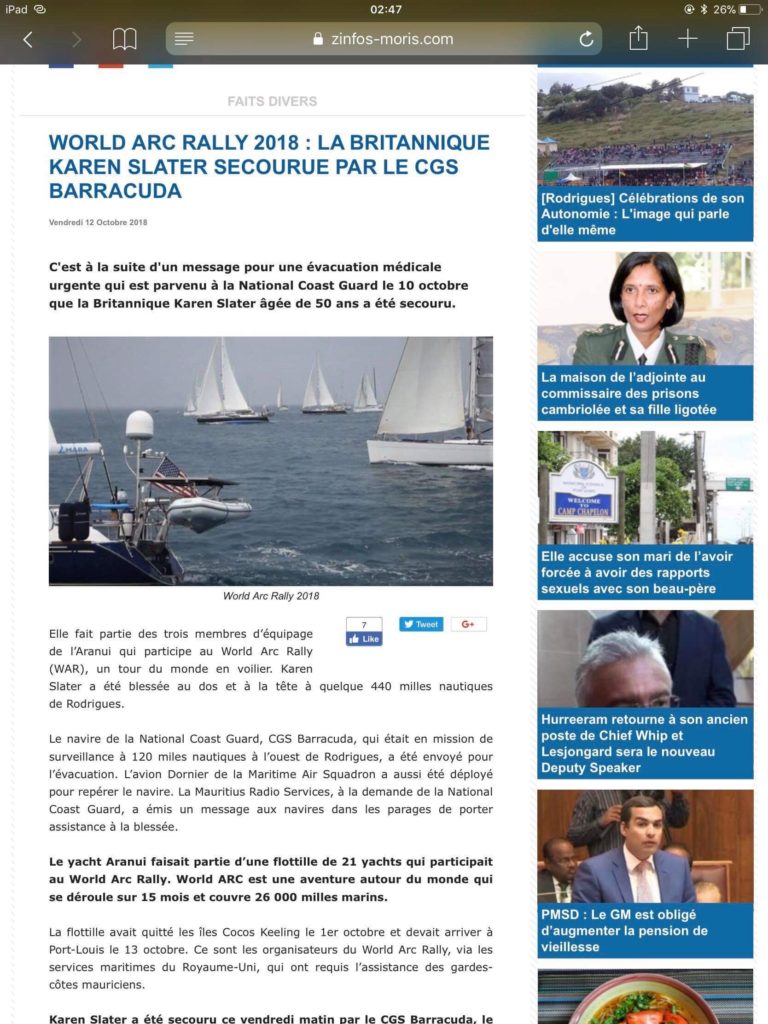

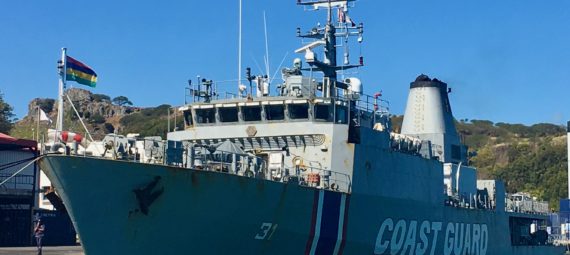
Thank you Brieta for sharing this experience. After 4 years at sea, I am vicariously reading the details and circumstances of accidents, and how it could have pan out for us. Very sobering.
Cheers
Nice write up Brieta, our little fleet went through several anxious days.
I knew this story but reading it again here gave me chills. A seriously scary story. Thank goodness it ended well. Bravery all around. Amazing video footage.
We used to go it alone but started to buddy boat more often after leaving Darwin. I too ‘light up’ whenever I see a buddy on our AIS. I’ll think of this story every time I see one in the future.